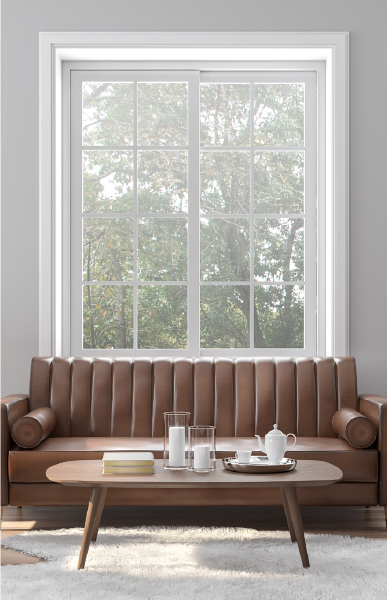You know that old expression, “Measure twice, cut once”? When it comes to measuring out basement windows, you can’t afford to get this one wrong.
There’s no jamming a window into place, or shaving down an eighth of an inch on a vinyl replacement window. This job requires precision.
The simplest way to replace your basement windows is to do a pocket installation—swapping out the old worn-out windows for the same size and type. If you are rethinking the size of your window, you’ll be cutting into your walls.
Leave that one to the pros.
A little window anatomy lesson.
Most windows are defined by the way they open. The two most common types of basement windows are slider windows that slide open and awning or vent windows that swing out. You may also hear folks call these hopper windows.
You’re going to be measuring from jamb to jamb (the jamb is the side of the window), so ignore any of the parts that deal with opening and closing, and ignore the trim of the window, too.
You’ll want to start by removing any interior trim so you can see the real size of this window. Take care removing this trim, as you’re going to reinstall it with your new window.
At this stage, you can get a sense of the condition of your walls surrounding the window. If those are looking rough, you’re probably looking at a bigger job.
Get out your tape measure.
To keep things straight, it’s a good idea to assign a name to each window you’re replacing. For example: “Southwest front corner window: slider”. Record all your measurements in one location. The back of that takeout napkin might get lost. Just saying.
Your first step is to make sure that the windows are square. Yup, you’re making sure your rectangle windows are square. All this really means is checking that the window corners haven’t shifted out of a 90 degree angle over time.
Stretching your tape measure tight, reach from the inside of the upper left hand corner of the window to the inside of the lower right hand corner. Place that tape measure right where the horizontal and vertical trim boards meet. Do the same measurement for top right to lower left. If those two measurements are within a quarter inch of each other, then your window is square.
If not—time to call in the pros.
Now measure the size of the openings. You won’t ever have to measure for depth— replacement windows come with a standard depth of 3.25 inches. Height and width are the measurements you need.
Start with the width of the window. From jamb to jamb, you’ll want to take a measurement at the bottom, the middle, and the top. The smallest of these three measurements is your width.
For height, it’s the same idea. Pulling your tape measure taut, start on the left measuring from jamb to jamb. You’ll measure the left, middle and then right side of the window. Your smallest number is your height.
Plumb, level and square.
Before you call in your order for your new replacement windows, consider rounding down your window measurement by an eighth of an inch. You want this new window to fit precisely, but a window that’s installed too tightly might become damaged — and that may mean that your window won’t open.
Your installer will work with shims and foam to get the windows plumb, level and square. An eighth of an inch gives them some play to get the windows in just right.
Anything worth doing is worth doing right.
If you’ve made it this far, congratulations! If you’re overwhelmed — don’t fret. In almost all cases, it’s just so much easier (and less risky) to have a professional do the measuring for you.
Window Nation is more than happy to take this work off of your hands. Let us send one of our trained technicians to do the measuring.
The experts we send have installed over one million windows, and they use our 18-point checklist for taking your measurements. You’ll get peace of mind knowing that your job will be done right the first time.
In-home estimates are always free with Window Nation. So set down the tape measure, and pick up the phone.


